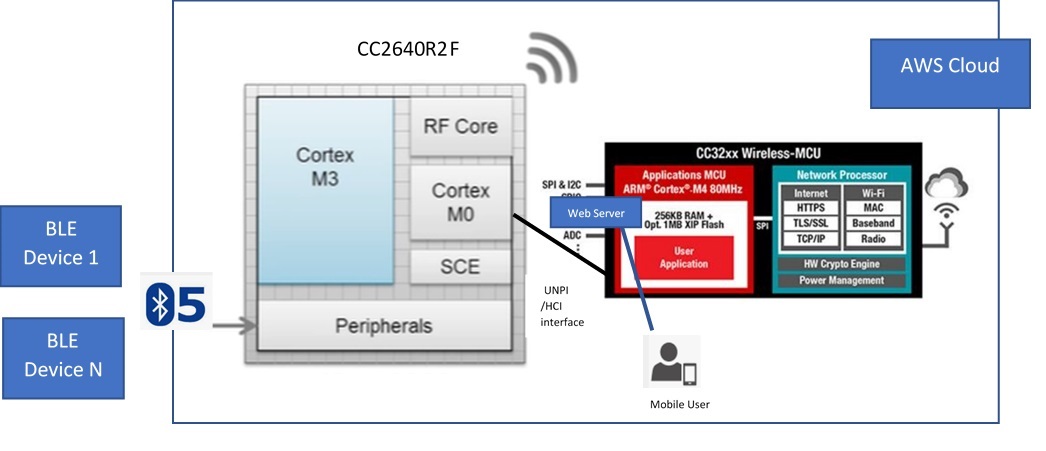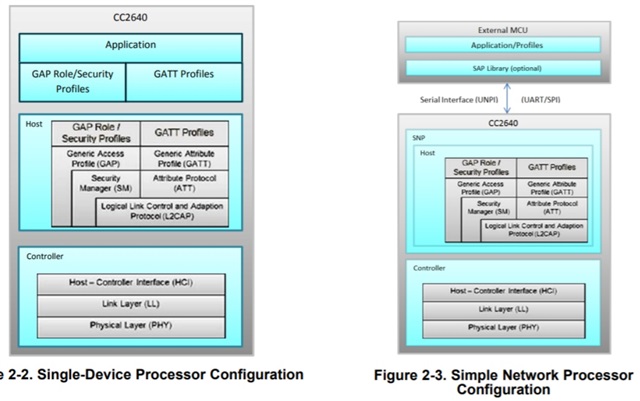Other Parts Discussed in Thread: CC2642R, TIDC-01005
Dear All,


We are working on BLE Wi-Fi Gateway with following features
- AWS connectivity
- OTA firmware update from AWS cloud
- BLE 5.0
- Web server hosting with Webpages for configuring Gateway
- Accessing Webpage in Soft Access Mode
We have workout above architecture for BLE WiFi Gateway product.
- CC2640R2F will use in Simple Network Processor Configuration as shown above
- Cortex M3 of CC2640R2F will not use. We are recommended same as during OTA firmware update we want to update CC32XX application firmware only.
- CC32xx device will connect over UNPI/HCI interface to CC2640R2F
- All profile handling of BLE devices will handle by CC32XX
- In OTA update from AWS only CC32XX application will update. CC2640R2F image will not update.
- BLE communication sequence
- CC32XX will initiate connection with Device 1 using HCI/UNPI interface command
- After successful connection initiate connection with Device N
- CC2640R2F will return handle to CC32XX
- Using received handle CC32XX will read/write on Device 1 to N characteristics/attribute using HCI/UNPI interface command
- Web server will be hosted on CC32XX and will access webpage in Soft Access point mode
Our queries:
- As mentioned in point 1 to 4, does it possible to handle profile of ble devices directly from CC32XX? Please suggest any correction.
- Do we get complete support of HCI command interface (default & user defined) or we will get only UNPI interface? What is UNPI interface?
- The BLE sequence communication mentioned in point 6 is correct? Please suggest any correction.
- Typically, which HCI command need to use for connection and Data read/write from multiple BLE device?
- Does it possible to go for BLE implementation with only Network Processor without Host processor? Does TI have BLE CC2640R2F like solution without cortex M3?
- As future provision, does it possible to program Cortex M3 of CC2640R2F from AWS cloud using OTA?
- Suggest any correction/improvement/issue in proposed architecture.
- Does 1MB flash on CC32xx sufficient for OTA, Web server, AWS connectivity feature
- With proposed architecture, how many simultaneous BLE salve device we can connect?
- Right now CC32XX and CC2640R2F not available for procurement. Considering market condition, tentatively how much time it will take for these chips available for procurement?
Regards...
Yogesh

